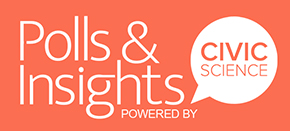A recent CivicScience survey of 2,930 U.S. adults reveals a nuanced picture of how Americans feel about state and regional fairs. While 23% say they genuinely enjoy attending, 37% enjoy them on occasion. On the other end of the spectrum, 35% don’t enjoy fairs, and 5% are indifferent.
Let us know: Do you generally enjoy attending state or regional fairs?
Enjoyment varies notably across different segments of the population. For instance, income seems to shape people’s relationship with fairs. Lower-income respondents—those earning under $30,000 annually—are more likely to find fairs enjoyable. Meanwhile, people earning between $100,000 and $149,999 are more heavily represented among those who don’t enjoy these events, hinting that higher earners may be less drawn to the traditional fair experience.
Educational attainment adds another layer. Among fair enthusiasts, a sizeable share hold graduate or professional degrees. But that same group also makes up a notable portion of those who don’t enjoy fairs, suggesting that more education doesn’t necessarily increase the likelihood of attending—it may even temper it in some cases.
Family life also plays a role. Parents are somewhat more likely to embrace the fairgoing experience, which isn’t all that surprising given how family-oriented these events often are. Still, people without children—neither parents nor grandparents—make up a large portion of fair lovers too, showing that the appeal isn’t exclusive to those with kids in tow.
Geography paints a more striking contrast. Suburban residents are disproportionately represented among fairgoers, while rural Americans are more likely to opt out. That divide could reflect a difference in exposure, local alternatives, or simply how fairs are positioned in different parts of the country.
When it comes to gender, the split is relatively even. Women make up a slight majority (56%) of those who enjoy fairs, but the difference is small enough to suggest that men and women are mostly aligned on this front.
Age, however, stands out more clearly. Older adults, particularly those 65 and up, are less inclined to enjoy fairs. They account for a significant share of non-enjoyers, possibly reflecting generational differences in how people choose to spend their free time.
All told, the data underscores that while fairs remain a beloved tradition for some, they’re far from universally loved. Factors like income, education, parental status, and where someone lives all shape how likely they are to embrace these events. For communities and organizers, these insights can be valuable in making fairs more inclusive, appealing, and tailored to a broader audience.
This article’s data comes solely from CivicScience’s database, which contains nearly 700,000 poll questions and 5 billion consumer insights. Our AI content creation tool, DataScribe, supported the article.

